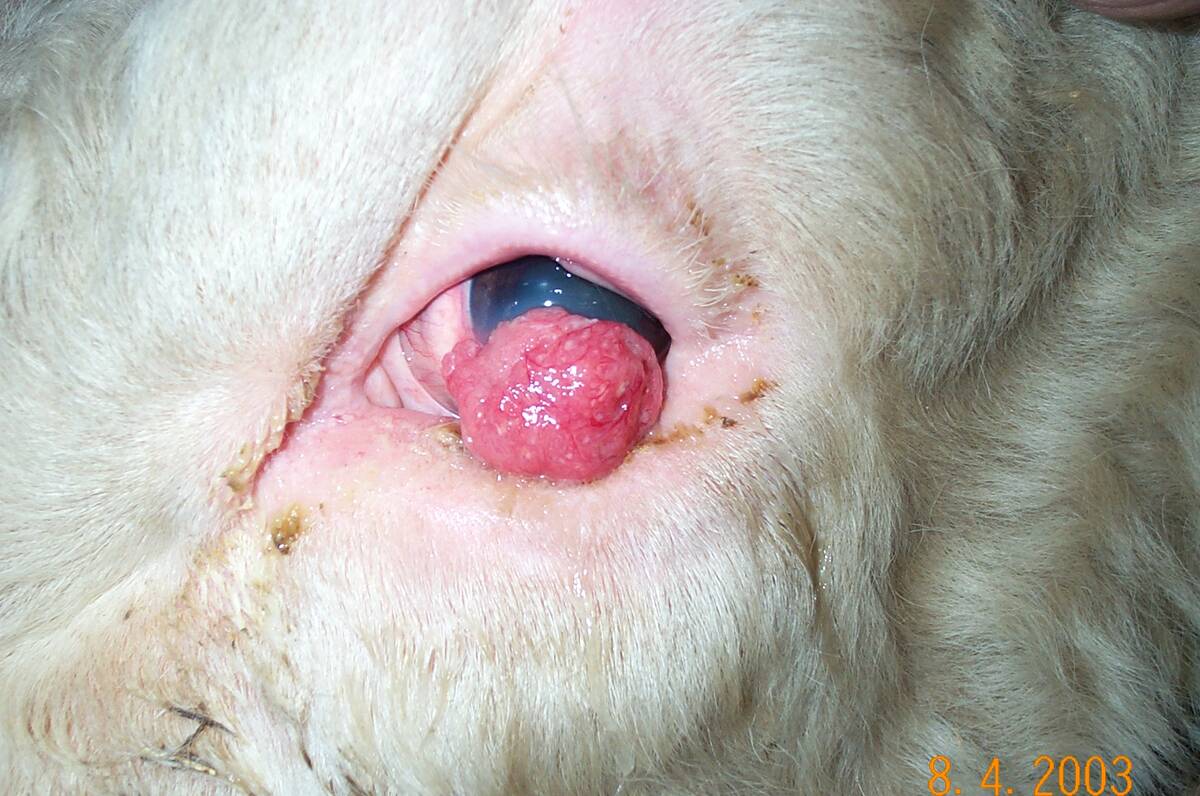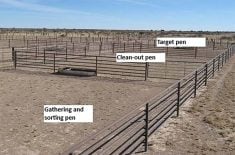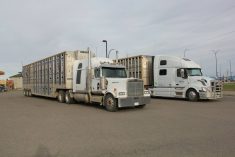The disease known as cancer eye in cattle is an important economic and animal welfare issue.
The specific type of cancer is usually squamous cell carcinoma, meaning a malignant cancer of the outer layers of skin and similar tissues. Cancer eye in cattle arises from the tissue that lines the inside of the eyelids and covers the outer portion of the eyeball. This tissue is called the conjunctiva and is the same part of the eye that gets red and swollen in cases of pink eye.
Horses can develop the same type of cancer, but the tumors tend to first grow on the third eyelid rather than the conjunctiva. There are other tumor types to affect the eyes of cattle including melanoma, but these are much less common.
Read Also

Quebec pork company calls for transparency around gene-edited pigs
Quebec-based pork company duBreton is calling for transparency around meats from gene-edited pigs on concerns that a lack of mandatory labelling will confuse consumers, and dilute certification claims. The organic sector is also calling for labelling rules.
A series of tissue changes ultimately lead to cancer development.
First, the outermost layer thickens, creating plaques that are difficult to detect.
These progressively thicken as the cells take on more and more characteristics of the unregulated growth that occurs with cancerous transformation.
Finally, the cancerous cells begin to invade and proliferate uncontrollably. This is the stage that is most easily detected because a mass begins to develop in the eye.
In cattle, cancer of the eye is directly related to exposure to ultraviolet light, which causes microscopic damage to DNA. Over time, the damage to this genetic material gradually accumulates. These genetic mistakes change how the cells replicate and divide.
Normally, the tissue lining the eye will turn over frequently and has a high capacity for healing, but this same mechanism also allows genetic mistakes to accumulate, releasing those cells from the normal inhibitors that keep them in check.
The result is runaway cell division, loss of normal regulation in tissues and ultimately, the cancerous growths that ruin the eyes of cattle.
Breed predisposition is an important factor in this disease. Cases of cancer eye are more likely to develop in cattle with light or white hair coats and with skin that has little or no colour pigment.
The classic breed associated with this condition is Hereford cattle with white skin and hair around the eyes. The lack of pigmentation is a critical piece to the cancer formation because pigment protects the DNA in the cells from the damage caused by UV light.
Although the disease is an important issue for cattle around the world, cases of cancer eye occur more often in areas of high altitude where animals receive higher doses of UV light such as the near the Rocky Mountains.
There are more cases in southern regions because the amount of UV light is highest closer to the equator.
Other causes that may contribute to cancer eye are uncertain and remain unproven. This includes the potential for genetic predisposition.
There is also mixed evidence to suggest a role in a certain virus type in cancer formation. Papillomaviruses are associated with this type of cancer in other body parts and other species, but a definitive link to cancer eye has not yet been proven.
Diagnosis is based on the clinical appearance and can be confirmed with a biopsy.
Managing cancer eye can be a challenge.
Producers should regularly look at eyes during vaccination, weaning and other handling activities. Any individual cattle with abnormal eyes should be flagged for examination and possible treatment by a veterinarian.
Breeding animals that have darker eye skin is another way to reduce the impact of this disease.
One good thing about this type of cancer is that it doesn’t often spread to distant tissues.
The real negative is that animals with severe cancer of the eye and surrounding tissue will not pass meat inspection.
The disease can have an impact on the economics of an operation — it is expensive to treat, affected cattle can be condemned at slaughter, it reduces the value of breeding animals and it can be painful, which has a negative impact on welfare.
Treatment often involves removing the eye and nearby tissues with the goal of completely removing the tumor. This type of cancer tends to grow rapidly and invade the local tissues.
For this reason, prompt diagnosis and treatment are critical for successfully removing all the cancer.

















